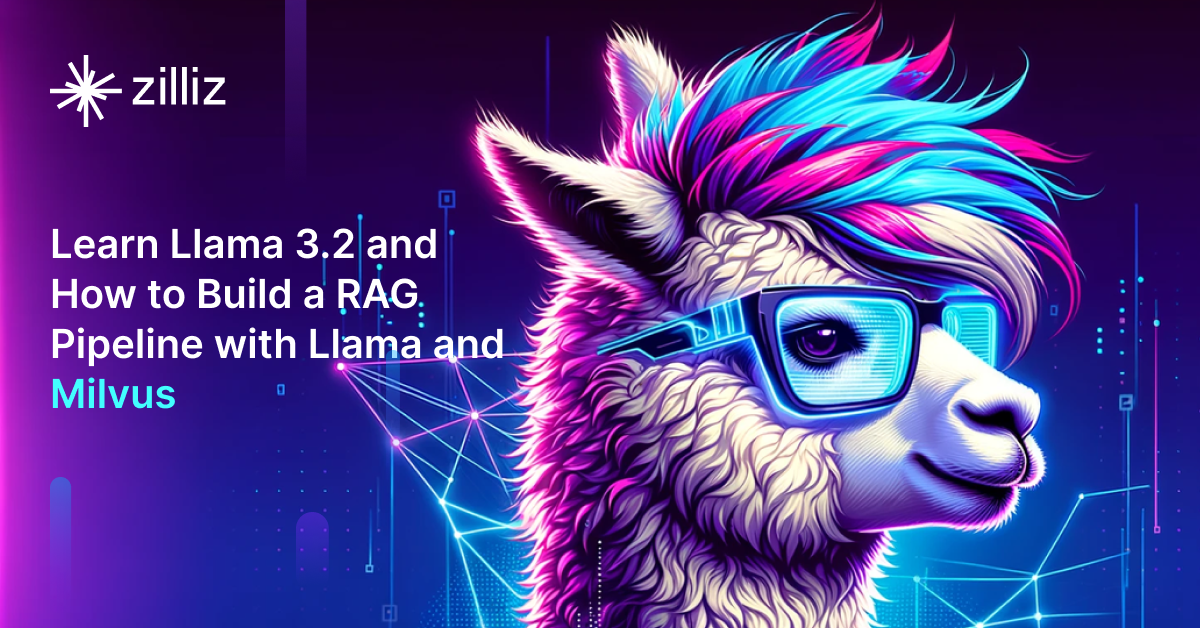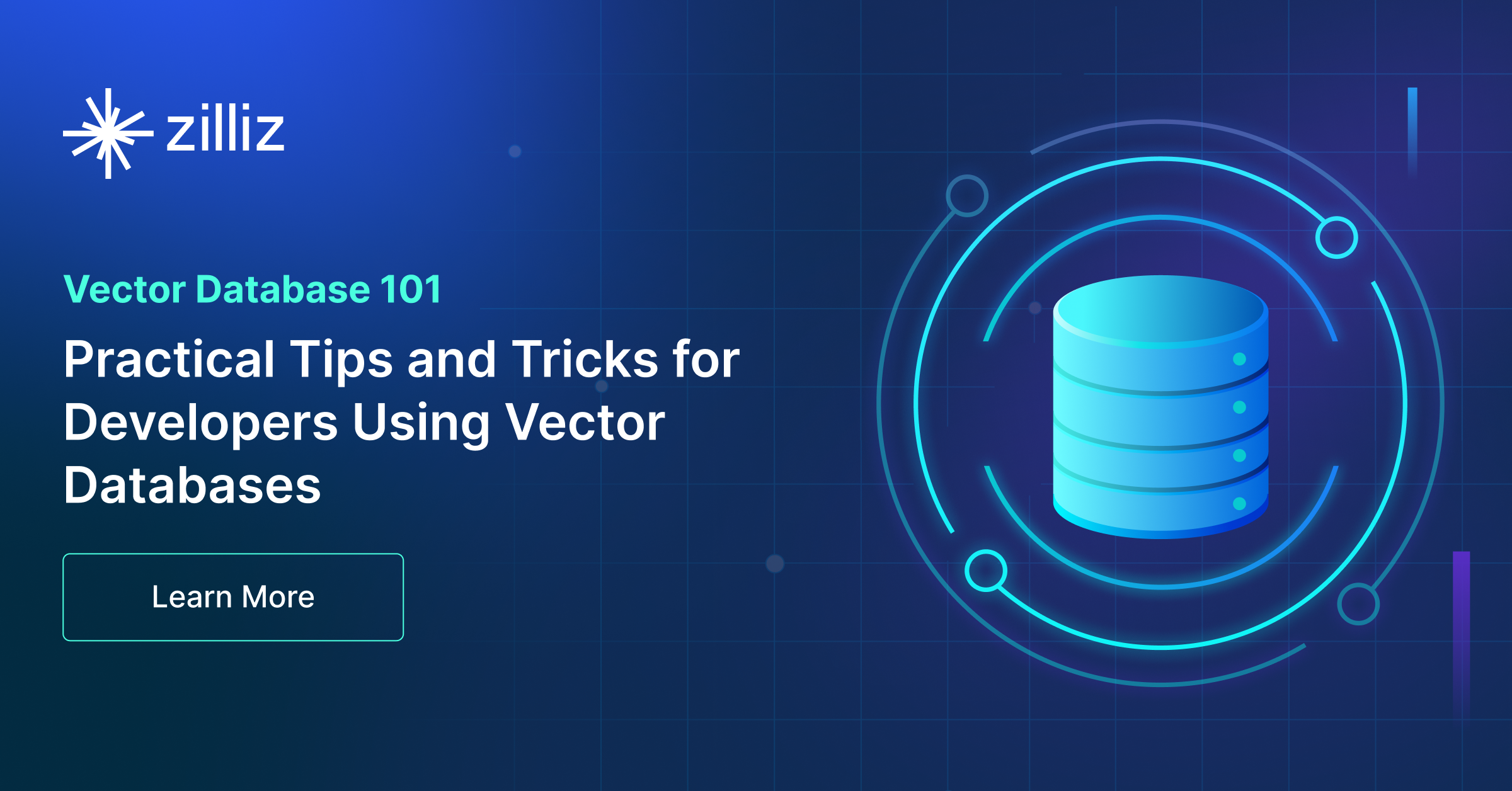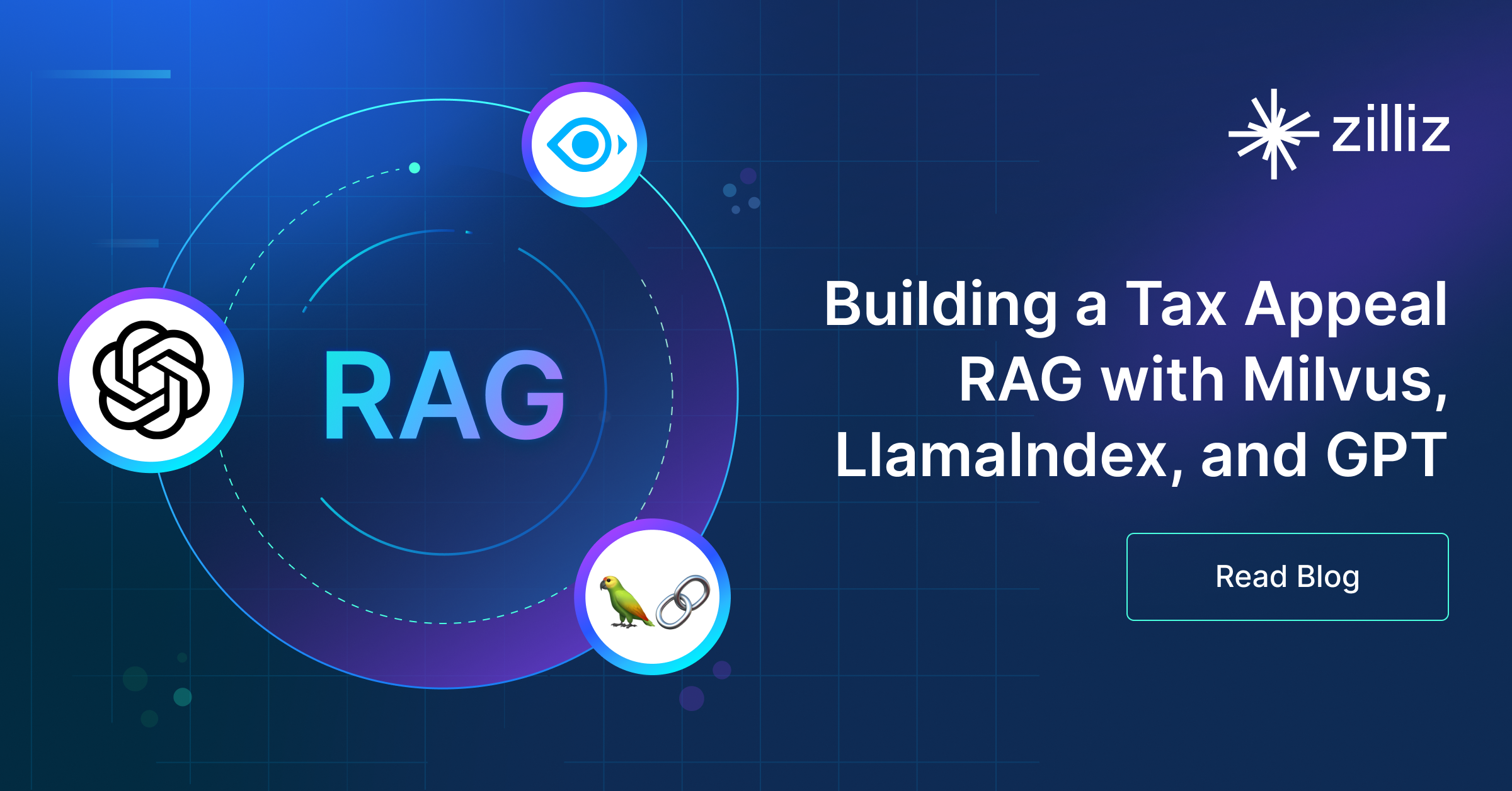Build RAG Chatbot with LangChain, Milvus, Google Vertex AI Gemini 1.5 Pro, and Cohere embed-english-v2.0
Introduction to RAG
Retrieval-Augmented Generation (RAG) is a game-changer for GenAI applications, especially in conversational AI. It combines the power of pre-trained large language models (LLMs) like OpenAI’s GPT with external knowledge sources stored in vector databases such as Milvus and Zilliz Cloud, allowing for more accurate, contextually relevant, and up-to-date response generation. A RAG pipeline usually consists of four basic components: a vector database, an embedding model, an LLM, and a framework.
Key Components We'll Use for This RAG Chatbot
This tutorial shows you how to build a simple RAG chatbot in Python using the following components:
- LangChain: An open-source framework that helps you orchestrate the interaction between LLMs, vector stores, embedding models, etc, making it easier to integrate a RAG pipeline.
- Milvus: An open-source vector database optimized to store, index, and search large-scale vector embeddings efficiently, perfect for use cases like RAG, semantic search, and recommender systems. If you hate to manage your own infrastructure, we recommend using Zilliz Cloud, which is a fully managed vector database service built on Milvus and offers a free tier supporting up to 1 million vectors.
- Google Vertex AI Gemini 1.5 Pro: This advanced AI model combines powerful machine learning capabilities with enhanced multimodal support, enabling seamless processing of text, images, and audio. Its strengths lie in scalability and customization, making it ideal for enterprise applications such as content generation, data analysis, and customer interaction automation.
- Cohere embed-english-v2.0: This model specializes in generating high-quality embeddings for English text, enhancing semantic understanding in various applications. Its strengths lie in capturing nuanced meanings and context, making it ideal for tasks like semantic search, recommendation systems, and clustering. Efficient and scalable, it's perfect for developers looking to integrate advanced text analysis into their applications.
By the end of this tutorial, you’ll have a functional chatbot capable of answering questions based on a custom knowledge base.
Note: Since we may use proprietary models in our tutorials, make sure you have the required API key beforehand.
Step 1: Install and Set Up LangChain
%pip install --quiet --upgrade langchain-text-splitters langchain-community langgraph
Step 2: Install and Set Up Google Vertex AI Gemini 1.5 Pro
pip install -qU "langchain[google-vertexai]"
# Ensure your VertexAI credentials are configured
from langchain.chat_models import init_chat_model
llm = init_chat_model("gemini-1.5-pro", model_provider="google_vertexai")
Step 3: Install and Set Up Cohere embed-english-v2.0
pip install -qU langchain-cohere
import getpass
import os
if not os.environ.get("COHERE_API_KEY"):
os.environ["COHERE_API_KEY"] = getpass.getpass("Enter API key for Cohere: ")
from langchain_cohere import CohereEmbeddings
embeddings = CohereEmbeddings(model="embed-english-v2.0")
Step 4: Install and Set Up Milvus
pip install -qU langchain-milvus
from langchain_milvus import Milvus
vector_store = Milvus(embedding_function=embeddings)
Step 5: Build a RAG Chatbot
Now that you’ve set up all components, let’s start to build a simple chatbot. We’ll use the Milvus introduction doc as a private knowledge base. You can replace it with your own dataset to customize your RAG chatbot.
import bs4
from langchain import hub
from langchain_community.document_loaders import WebBaseLoader
from langchain_core.documents import Document
from langchain_text_splitters import RecursiveCharacterTextSplitter
from langgraph.graph import START, StateGraph
from typing_extensions import List, TypedDict
# Load and chunk contents of the blog
loader = WebBaseLoader(
web_paths=("https://milvus.io/docs/overview.md",),
bs_kwargs=dict(
parse_only=bs4.SoupStrainer(
class_=("doc-style doc-post-content")
)
),
)
docs = loader.load()
text_splitter = RecursiveCharacterTextSplitter(chunk_size=1000, chunk_overlap=200)
all_splits = text_splitter.split_documents(docs)
# Index chunks
_ = vector_store.add_documents(documents=all_splits)
# Define prompt for question-answering
prompt = hub.pull("rlm/rag-prompt")
# Define state for application
class State(TypedDict):
question: str
context: List[Document]
answer: str
# Define application steps
def retrieve(state: State):
retrieved_docs = vector_store.similarity_search(state["question"])
return {"context": retrieved_docs}
def generate(state: State):
docs_content = "\n\n".join(doc.page_content for doc in state["context"])
messages = prompt.invoke({"question": state["question"], "context": docs_content})
response = llm.invoke(messages)
return {"answer": response.content}
# Compile application and test
graph_builder = StateGraph(State).add_sequence([retrieve, generate])
graph_builder.add_edge(START, "retrieve")
graph = graph_builder.compile()
Test the Chatbot
Yeah! You've built your own chatbot. Let's ask the chatbot a question.
response = graph.invoke({"question": "What data types does Milvus support?"})
print(response["answer"])
Example Output
Milvus supports various data types including sparse vectors, binary vectors, JSON, and arrays. Additionally, it handles common numerical and character types, making it versatile for different data modeling needs. This allows users to manage unstructured or multi-modal data efficiently.
Optimization Tips
As you build your RAG system, optimization is key to ensuring peak performance and efficiency. While setting up the components is an essential first step, fine-tuning each one will help you create a solution that works even better and scales seamlessly. In this section, we’ll share some practical tips for optimizing all these components, giving you the edge to build smarter, faster, and more responsive RAG applications.
LangChain optimization tips
To optimize LangChain, focus on minimizing redundant operations in your workflow by structuring your chains and agents efficiently. Use caching to avoid repeated computations, speeding up your system, and experiment with modular design to ensure that components like models or databases can be easily swapped out. This will provide both flexibility and efficiency, allowing you to quickly scale your system without unnecessary delays or complications.
Milvus optimization tips
Milvus serves as a highly efficient vector database, critical for retrieval tasks in a RAG system. To optimize its performance, ensure that indexes are properly built to balance speed and accuracy; consider utilizing HNSW (Hierarchical Navigable Small World) for efficient nearest neighbor search where response time is crucial. Partitioning data based on usage patterns can enhance query performance and reduce load times, enabling better scalability. Regularly monitor and adjust cache settings based on query frequency to avoid latency during data retrieval. Employ batch processing for vector insertions, which can minimize database lock contention and enhance overall throughput. Additionally, fine-tune the model parameters by experimenting with the dimensionality of the vectors; higher dimensions can improve retrieval accuracy but may increase search time, necessitating a balance tailored to your specific use case and hardware infrastructure.
Google Vertex AI Gemini 1.5 Pro optimization tips
Gemini 1.5 Pro is a robust model designed for complex RAG applications requiring deep reasoning. Optimize retrieval by implementing advanced ranking algorithms to ensure highly relevant documents are included. Structure prompts with clear logical sections to maximize response coherence. Keep temperature between 0.1 and 0.3 for factual precision, fine-tuning top-k/top-p as needed. Use Google’s AI infrastructure to batch API calls, reducing processing overhead. Implement caching strategies to optimize frequently queried topics. Streaming responses can enhance real-time applications, improving perceived responsiveness. If deploying multiple models, reserve Gemini 1.5 Pro for high-value analytical tasks while using lighter models for simpler retrieval-based queries.
Cohere embed-english-v2.0 optimization tips
Cohere embed-english-v2.0 is a robust English-language embedding model, ideal for fast and accurate semantic retrieval in RAG systems. To optimize performance, preprocess input text by removing redundant information and normalizing formatting. Apply techniques like stemming or lemmatization to reduce the dimensionality of the input without losing meaning. Use high-performance indexing algorithms like HNSW for efficient vector search. When working with large-scale systems, batch embeddings for faster processing and minimize API latency. Consider implementing dimensionality reduction techniques to compress embeddings and reduce storage costs while retaining sufficient accuracy. For large document collections, periodically refresh the embeddings to ensure that they stay relevant to evolving data.
By implementing these tips across your components, you'll be able to enhance the performance and functionality of your RAG system, ensuring it’s optimized for both speed and accuracy. Keep testing, iterating, and refining your setup to stay ahead in the ever-evolving world of AI development.
RAG Cost Calculator: A Free Tool to Calculate Your Cost in Seconds
Estimating the cost of a Retrieval-Augmented Generation (RAG) pipeline involves analyzing expenses across vector storage, compute resources, and API usage. Key cost drivers include vector database queries, embedding generation, and LLM inference.
RAG Cost Calculator is a free tool that quickly estimates the cost of building a RAG pipeline, including chunking, embedding, vector storage/search, and LLM generation. It also helps you identify cost-saving opportunities and achieve up to 10x cost reduction on vector databases with the serverless option.
 Calculate your RAG cost
Calculate your RAG cost
What Have You Learned?
What have you learned? Throughout this tutorial, you’ve embarked on an incredible journey into the world of building a cutting-edge Retrieval-Augmented Generation (RAG) system! By leveraging a powerful framework like LangChain, you've seen firsthand how it cohesively orchestrates all your components, ensuring smooth interactions and a robust foundation for your project. Diving into Milvus, you've discovered how a vector database can supercharge your applications with lightning-fast search capabilities, making it easy to retrieve relevant information at the drop of a hat.
With Google Vertex AI Gemini 1.5 Pro, you unlocked the potential of large language models that breathe life into your system, granting it the conversational intelligence to engage with users in a meaningful way. And let's not forget the embedding model, Cohere's embed-english-v2.0, which allowed you to craft rich semantic representations that enhance your system's understanding of context and nuance.
We also shared some neat optimization tips and even a free cost calculator to help you plan your deployment. As you stand on the brink of this exciting frontier, remember—this is just the beginning! Now that you’re equipped with these powerful tools and knowledge, the sky is the limit. So go ahead, start building, optimizing, and innovating your own RAG applications. We can't wait to see where your creativity takes you!
Further Resources
🌟 In addition to this RAG tutorial, unleash your full potential with these incredible resources to level up your RAG skills.
- How to Build a Multimodal RAG | Documentation
- How to Enhance the Performance of Your RAG Pipeline
- Graph RAG with Milvus | Documentation
- How to Evaluate RAG Applications - Zilliz Learn
- Generative AI Resource Hub | Zilliz
We'd Love to Hear What You Think!
We’d love to hear your thoughts! 🌟 Leave your questions or comments below or join our vibrant Milvus Discord community to share your experiences, ask questions, or connect with thousands of AI enthusiasts. Your journey matters to us!
If you like this tutorial, show your support by giving our Milvus GitHub repo a star ⭐—it means the world to us and inspires us to keep creating! 💖
- Introduction to RAG
- Key Components We'll Use for This RAG Chatbot
- Step 1: Install and Set Up LangChain
- Step 2: Install and Set Up Google Vertex AI Gemini 1.5 Pro
- Step 3: Install and Set Up Cohere embed-english-v2.0
- Step 4: Install and Set Up Milvus
- Step 5: Build a RAG Chatbot
- Optimization Tips
- RAG Cost Calculator: A Free Tool to Calculate Your Cost in Seconds
- What Have You Learned?
- Further Resources
- We'd Love to Hear What You Think!
Content
Vector Database at Scale
Zilliz Cloud is a fully-managed vector database built for scale, perfect for your RAG apps.
Try Zilliz Cloud for Free


